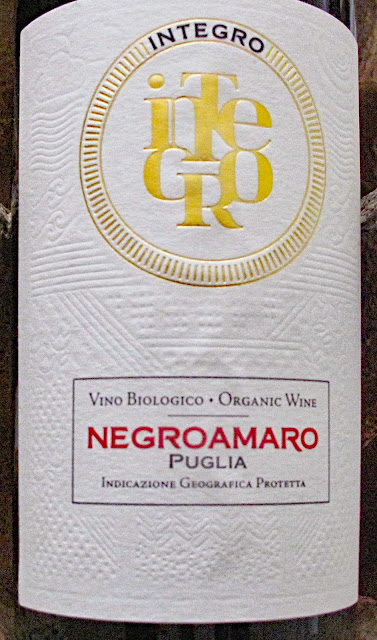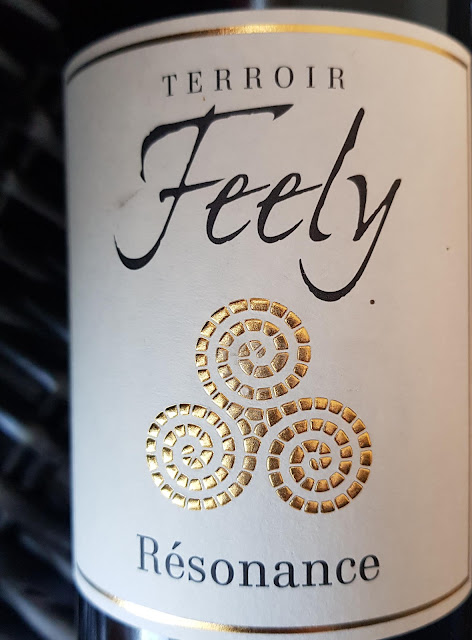SuperValu's Italians
On Offer For Next Two Weeks
SuperValu are in the mood to celebrate all things Italian and their wine expert Kevin O’Callaghan is joining in the fun by putting the focus on their range of Specially Sourced Italian Wines which will be on offer for two weeks from Thursday May 11th.
We’ve enjoyed the five below over the past few days. From the "fashionable" Aglianico to the more traditional appassimento, they are all good (good value too) with the Ammasso just about about shading it (I might need a re-run!) as our number one of the bunch.
Tombacco Aglianico dei Beneventano (IGT) 2013, 14%, €10.00 (down from 12.99).
Aglianico, a variety with Greek connections, is prominent in the vineyards of Campania and Basilicata. Haven’t heard of it? Don’t worry. The Italian vineyards are among the most diverse in the world and hundreds of varieties have been “authorised” for planting and selling as wine, according to Vino Italiano.
Aglianico is the dominant red wine grape in the IGT of Beneventano which itself is a thriving IGT in Campania. In Grapes and Wines, it is described as “suddenly one of the most fashionable grapes of a newly fashionable region”.
There are aromas of vanilla, red fruits too, from this deep ruby coloured wine. It is soft on the palate, cherry and plum, a little spice too, plus a decent finish. Elegant and warm and Highly Recommended. Pair with “all red meats and aged cheeses”.
Il Capolavoro Vino Rosso Appassimento, Puglia (IGT) 2015, 14.5%, €10.00 (down from 14.99).
Some of you may have seen Gonzalo Gerardo Higuaín score the goals that gave Juventus a vital away win over Monaco in the first leg of their Champions League semi-final. His contribution was described as “il capolavoro”, the Italian for masterpiece. Might try a bottle of this next time that Higuaín is on telly.
The vinous Il Capolavoro has been produced by using the traditional “appassimento” method, whereby the grapes are partially dried to increase colour and concentration. It has worked well for the Italians over the decades and works rather well here too.
The colour is a rich ruby and you’ll notice the legs are slow to clear. There are intense aromas of dark fruits, chocolate notes too. On the palate, that sought after concentration is pleasantly evident; it is full of flavour with a touch of smooth spice, a hint of sweetness and it is juicy too. Easy drinking and Highly Recommended.
Pairings recommended are: veal, chicken, and pork and any pasta or pizza that comes with a tomato sauce.
Burdizzo Vermentino Toscana (IGT) 2015, 12%, €10.00 (down from 12.99)
Vermentino, a favourite of mine, may be found “the length of Italy” according to Grapes and Wines but the “best wines come from Tuscany, Sardinia ad Liguria.” Outside of Italy you’ll find some pretty good examples in the Languedoc where it is also known as Rolle.
Vino Italiano considers it “one of Italy’s most distinctive whites” and also highlights the same three regions. Wine writer Fiona Beckett says that many tip Vermentino to challenge the dominance of Sauvignon Blanc, Riesling and Pinot Gris.
Vermentino production in Tuscany, an area where red varieties account for almost 90% of the total vineyard area, has rocketed in the last 10 years, according to Decanter: “…. 2010 found 653 hectares planted to Vermentino. By 2015, the regional government was reporting 1,192 hectares….”.
Our Burdizzo has the colour of light straw. Aromas are of white fruit, with floral and herbal notes, a pleasant mix. Palate is crisp and fresh, no shortage of that white fruit with peach and green-melon flavours to the fore all the way to a long finalé. Highly Recommended.
Barone Montalto Ammasso 2013 Rosso Terre Siciliane (IGT), 14.5%, €15.00 (down from €18.99)
This too uses partially dried grapes, the method known in Sicily as Ammasso. The varieties blended in this gorgeous and complex wine are Nero d’Avola, Nerello Mascalese, Merlot and Cabernet Sauvignon. A serious work of wine is the result and it is Very Highly Recommended.
 Medium ruby red is the colour and the aromas, of dark fruit, are pretty intense. There is a luscious concentrated fruit, hints of sweetness, light spice too; overall, a rather plush wine, tannins just about in play, and the finish is long.
Medium ruby red is the colour and the aromas, of dark fruit, are pretty intense. There is a luscious concentrated fruit, hints of sweetness, light spice too; overall, a rather plush wine, tannins just about in play, and the finish is long.
Castellani Arbos Sangiovese, Tuscany (IGT) 2013, 13.5%, €10.00 (down from 12.99)
Vanilla is prominent in the aromas of this Highly Recommended medium red; darker fruits there too. On the palate, it is smooth and fruity (cherries and plums), drifts of spice too, plus that quintessential acidity (almost an ever-present in Italian wines), and fine sweet tannins make it a pleasure in the mouth and the finish ain't bad either. Great value.
The producer’s aim has been to use the best Sangiovese grapes “to produce a Tuscan red dominated by fruity and spice notes, typical of the grape”. This worthy effort may be enjoyed with red meats and pasta dishes.



















